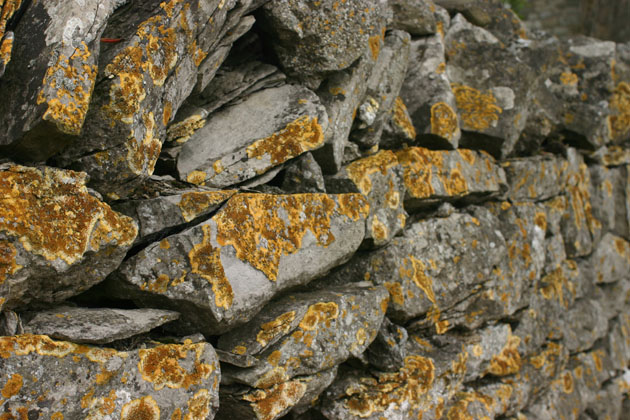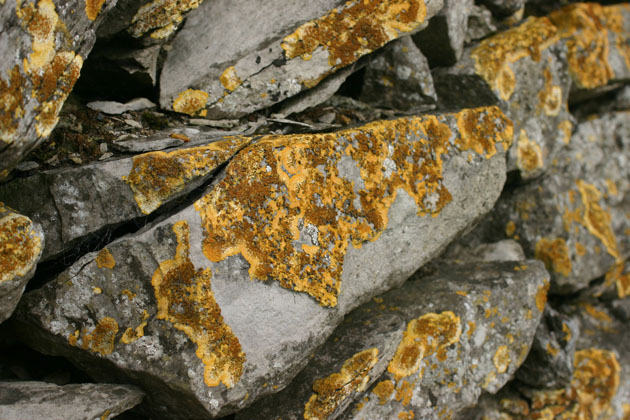Sunburst on Stone

The lichen growing on this wall stopped me in my tracks the other day, as far as I can tell it is Elegant Sunburst Lichen. I can see how Johann Heinrich Friedrich Link, a German naturalist and botanist who named it in 1791, would come up with that description. Those little suns were burning fiercely bright and seemed to glow. There is a term for this lichen when growing on stone known as ‘gilding the granite’. Here it is on limestone but the effect is the same.

This lichen was one of the first used in lichenometry – a technique of estimating the age of rock faces by measuring the diameter of the lichen stems growing on them. After an initial period of one or two decades to establish, this lichen grows at a rate of 0.5 mm per year for the first century, before slowing down somewhat. Lichen properties are amazing, whether leafy, shrubby of crust-like they cover approximately eight per-cent of the land surface, including some of the most extreme environments on earth. Lichens are incredibly useful because they tell us about the health of our environment as they are very sensitive to air pollution. As a rule of thumb, the smaller the variety of lichens in an area, the more polluted it is.
Lichens are also useful to their neighbours, recycling nutrients used by other plants and providing homes for spiders, mites, lice and other insects. Humans extract the most incredible range of wool dyes from lichens and also eat some of the edible species (something I’ve yet to try!), while drug companies use lichens to make antibiotics or sunscreen cream.
There are about 30,000 species of lichen worldwide, and they come in a dazzling variety of shapes and colours. Some are almost invisible to the naked eye and grow as a crust on rocks, trees or soil. Others are called beard lichens and these can be bushy or trailing, sometimes growing up to three metres in length, and others are lobed and leaf-like. Colours range from muted grey-browns to brilliant yellows and bright orangey reds.
I’m finding learning and remembering their names quite a challenge, but I’m noting the ones that grow locally and discovering why – our crusty sunburst here likes to grow near the site of bird or small mammal droppings. It is also very exciting seeing them under magnification, when their shapes become even more intriguing.


2 Comments
Lichens are fascinating , but such a difficult subject to learn as there are so many.
Amanda xx
The more I find out the more fascinating they become – quite apart of course from their beauty. Precious little micro-worlds